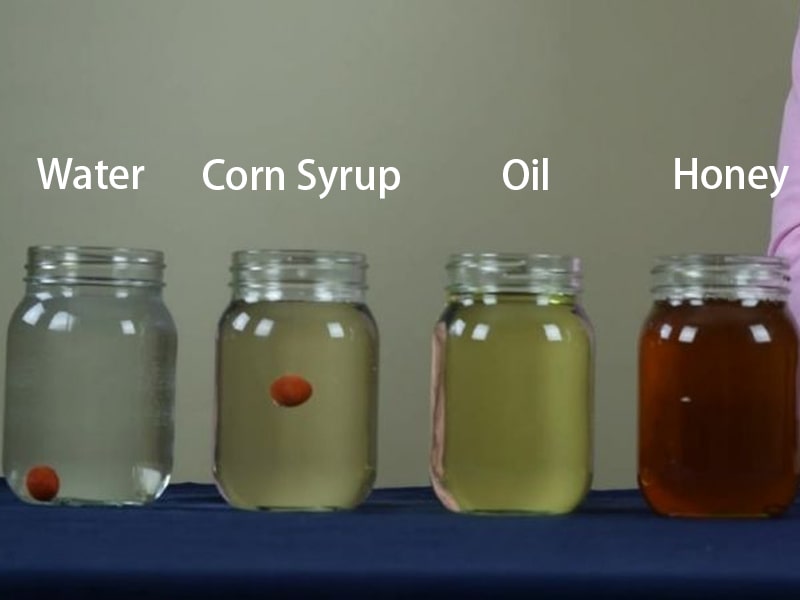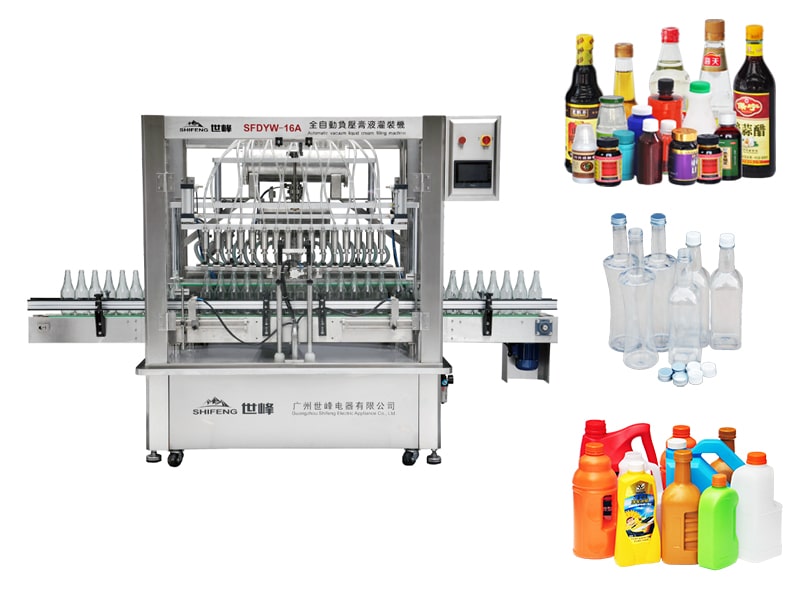duction sealing is a critical packaging technique that creates an airtight, tamper-evident foil seal inside a container’s cap. In practice, a specialized induction sealer machine generates a high-frequency electromagnetic field around a capped container. This field heats the aluminum foil layer in the pre-fitted cap liner, melting the polymer adhesive and bonding it to the bottle’s rim. The result is a hermetic seal that prevents leaks and contamination. For example, induction sealers “create a hermetic barrier that ensures [products] remain fresh, secure, and tamper-evident”. As a leading packaging machinery manufacturer, SFXB offers a range of induction sealing machines (handheld, tabletop, and inline models) and compatible foil liners to help food, pharmaceutical, cosmetic, and chemical companies improve product safety and shelf life.

Figure: Diagram of an induction sealing head and liner. An electromagnetic coil (red) induces currents in the aluminum foil of the cap liner (green lines), heating it to melt the polymer (yellow) and bond to the container neck, forming an airtight seal.
How Induction Sealing Works
In an induction sealing system, each bottle is first capped with a closure that contains a multi-layer induction liner (typically layers of paper pulp, wax, aluminum foil, and a thin polymer film). As the capped bottle passes under the induction sealing head, the coil emits an oscillating magnetic field. This field induces eddy currents in the conductive foil liner, causing it to heat up rapidly. The heat melts the wax and polymer layers in the liner. When the liner cools and solidifies, it adheres firmly to the bottle’s neck, creating a hermetic (air- and leak-proof) seal. Because induction sealing is a completely non-contact process (the sealer does not physically touch the bottle), it can be used on heat-sensitive products without risk of damage. This non-contact method is also inherently safe, as there are no open flames or hot plates near the product.
SFXB’s induction sealers accommodate various cap and container sizes by swapping out different coil heads. For example, a flat sealing head is used on standard bottles, while a tunnel or flat coil can handle large-mouth jars. Proper setup involves adjusting power and dwell time so that each liner fully melts without burning. (A good rule of thumb is to start with moderate settings and inspect the first few seals, adjusting until a firm, unbroken foil bond is achieved.) When optimized, induction sealing is fast and reliable: even at high line speeds, it produces consistent seals without operator intervention.
Types of Induction Sealers
Induction sealing machines come in several formats to match production needs. Handheld induction sealers are portable units ideal for low-volume or laboratory use. For example, SFXB’s SF-1020 is a compact handheld induction sealer used for small batches, testing, or startups. Operators simply set the desired power and timer, place the coil over the bottle cap, and press a trigger to apply the seal. Handheld sealers do not require special power or cooling (often running off standard 110–220V), making them convenient for on-demand sealing anywhere. These units are also useful for spot-checking seals or reworking sealed products.
For medium-volume operations, bench-top or tabletop induction sealers (sometimes called desktop sealers) are semi-automatic machines. These units sit on a table or platform and require the operator to cap and feed each bottle under the sealing head (either manually or via a short conveyor). Bench-top sealers can handle dozens of bottles per minute and are common in laboratories, small factories, and pilot lines. They often feature digital power and timer controls for repeatable settings.
For high-speed production, inline (continuous) induction sealing machines are used. These systems integrate directly into a packaging line after the capping station. Bottles move continuously on a conveyor under a fixed sealing head. Inline sealers can seal hundreds of containers per minute. For instance, some heavy-duty inline sealers operate at rates around 100 bottles per minute or more. These industrial induction sealers are designed with robust construction (stainless steel frames, air- or water-cooled coils) to run 24/7. They often include automatic controls, safety interlocks, and foil-detection systems to ensure only properly sealed bottles proceed on the line. SFXB’s in-line sealer models, for example, accommodate all common neck diameters and are available with air- or water-cooled heads for continuous operation.
Other variations include semi-automatic machines (with a hold-to-seal switch or foot pedal for intermittent operation) and combination machines (for example, an all-in-one filling/capping/sealing unit for small batches). In all cases, the key is that the induction head’s coil must be positioned above each capped bottle or container for the programmed time. Proper spacing (air gap) between the coil and the foil is critical (typically a few millimeters) to achieve uniform heating.
Key Benefits of Induction Sealing
Induction sealing offers multiple advantages over other closure methods. Its primary benefit is creating a tamper-evident, hermetic seal that significantly extends shelf life. The tight foil bond prevents oxygen, moisture, bacteria, and other contaminants from entering the container. For example, SFXB notes that an induction seal “prevents oxygen, moisture, bacteria, and other contaminants from entering the package. This protection keeps products fresher for longer”. By blocking these spoilage factors, induction-sealed products retain freshness, potency, and flavor well past what unsealed containers can achieve.
The tamper-evident nature of induction foil is also crucial for consumer safety and confidence. A sealed liner must be broken or peeled off before accessing the product, so any tampering is immediately visible. This built-in safety feature builds trust: customers see an intact “SEALED for your protection” liner (as shown below) and know the product has not been compromised.
Figure: A bottle (over-the-counter medication) and its removed cap showing the induction foil liner (“SEALED for your protection”). This foil under-cap seal is hermetic and tamper-evident, ensuring the contents remain uncontaminated until first use.
Induction sealing is especially valued in industries where leaks or contamination have severe consequences. For liquid food and beverages (juices, sauces, oils), seals prevent product leakage during shipping and storage. SFXB explains that a single leaking bottle can spoil an entire pallet, so many retailers require induction seals for liquids. In addition, induction seals deter tampering in pharmaceuticals and nutraceuticals – ensuring that medicines, vitamins, and supplements reach consumers safely. Cosmetics and personal care products (lotions, creams, perfumes) also use induction seals to keep active ingredients stable and unaltered before first use.
Other benefits include:
- Improved hygiene: Because the induction process involves no contact with the bottle or product, there is no introduction of contaminants during sealing. This makes induction seals cleaner than methods that physically clamp or heat the container. In fact, manufacturers often prefer induction seals for sensitive products (e.g. sterile pharmaceuticals) because the non-contact process minimizes the risk of introducing germs or particulates.
- Speed and efficiency: Induction sealing is fast and can be easily automated. High-speed machines require minimal operator interaction. Once installed, an induction sealer simply needs regular foil liners and routine maintenance. The technology itself is energy-efficient: coil power is applied only when a bottle is in position. SFXB’s induction sealers, for instance, incorporate digital controls and counters so that sealing parameters (power, time) are easily dialed in, and production output is tracked.
- Cost savings: By reducing product spoilage, leaks, and recalls, induction sealing can lower overall costs. SFXB notes that because induction sealing has a “small footprint” and is non-contact, it “requires minimal maintenance,” translating to significant savings. Fewer leaks and longer shelf life mean less wasted product and fewer customer complaints. Over time, the return on investment for an induction sealing machine is often realized quickly, especially in high-volume production.
- Branding opportunities: Although secondary to safety, induction liners can be customized with branding (logos, slogans, QR codes) on the foil. This turns the seal into a marketing touchpoint. A unique foil print can help convey quality and authenticity. (Many premium food and supplement brands highlight their induction seal on packaging as a sign of safety.)
Common Applications
Induction sealing is used across a wide range of industries and products. In food and beverage, any bottled products benefit: juices, sauces, condiments, oils, and dairy items often use induction liners to stay fresh. For example, freshly squeezed juice can be shipped further with an induction seal preventing oxidation. Food-grade packaging frequently needs an airtight barrier to meet hygiene standards.
In the pharmaceutical and nutraceutical sectors, induction sealing is considered essential for compliance and safety. Medicines (pills, cough syrups, eye drops) and supplements routinely come with induction-sealed caps. This ensures tamper evidence and meets regulatory guidelines (e.g. FDA requirements for safety seals). Induction seals protect moisture-sensitive active ingredients and keep capsules from being compromised during transit.
The cosmetics and personal care industry also relies on induction seals. Lotions, creams, shampoos, and fragrances often contain volatile or reactive ingredients that must be kept isolated until use. Induction seals protect these formulas from air and contamination. For example, a lotion bottle will stay free of microbes or oxygen until the consumer removes the foil. Similarly, induction sealing is used in chemical and industrial packaging: cleaning products, pesticides, and automotive fluids use these seals to prevent spills and reactions with outside air.
Other niche uses include consumer goods (e.g. ink cartridges, lubricants) and specialty foods (spreads, powdered supplements). Wherever a strong barrier and clear tamper evidence are needed, an induction sealer is appropriate. This versatility – sealing plastics (PET, HDPE, LDPE, PP) and glass bottles alike – makes induction one of the most widely used sealing technologies in packaging today.
Operating an Induction Sealer
For best results, several practical considerations should be addressed when using induction sealing equipment:
- Cap and liner compatibility: The container’s neck design and the closure’s liner must match. The cap liner is typically chosen based on the type of bottle material and its neck profile. SFXB supplies a variety of standardized foil liners compatible with common cap types. Always confirm that the foil and polymer are rated for the product’s temperature range and chemical compatibility.
- Machine settings: Each packaging line will require tuning of the power output, dwell time, and captorque. During initial setup, operators should run a few test bottles and check that the foil fully bonds (no unsealed patches) without scorching. If a foil overheats, reduce power or time; if seals are weak, increase them. Inline machines can be equipped with foil-detection sensors and automatic on/off controls to conserve energy when no bottles are present.
- Conveyor speed and head gap: The conveyor speed (or dwell time under the coil) must allow enough heating. Higher line speeds may require stronger power supplies or multiple sealing heads. In addition, maintain the recommended gap (often ~3 mm) between the coil and cap for uniform energy transfer. SFXB and others advise that the coil and conveyor be parallel to avoid hotspots.
- Maintenance: Since induction sealing is non-contact, the machines themselves have few moving parts. Regular checks typically involve cleaning dust off coils, inspecting cables, and replacing worn-out air/water filters in cooled units. The foil liners are consumables and should be stored properly to avoid moisture. No lubrication or major mechanical service is usually required, contributing to the method’s low downtime.
- Safety: Although induction sealers emit electromagnetic fields, they are generally safe when properly shielded and grounded. Operators should avoid placing metal objects between the coil and cap during operation. SFXB induction sealers comply with relevant industrial safety standards. Because there is no heat at the coil surface (the heat is generated in the foil), there is little risk of burns or fire.
Summary
In summary, induction sealing provides a fast, reliable, and hygienic way to seal bottles and jars with foil liners. It ensures tamper evidence, leak-proofing, and shelf-life extension without coming into contact with the product. Across industries from food and beverage to pharmaceuticals and chemicals, induction sealers have become an industry standard for secondary sealing. With machines available in portable handheld, tabletop, and fully automated inline versions, even the highest-speed packaging lines can be equipped with this technology.
As a custom machinery supplier, SFXB manufactures induction sealer machines and related consumables (aluminum foil liners) that meet these diverse needs. Whether you need a small benchtop foil sealer for a pilot batch or a high-speed inline cap sealer for a full production line, the principles are the same: electromagnetic induction to apply a tight, tamper-resistant seal. By following best practices in setup and maintenance, manufacturers can leverage induction sealing to improve product quality, reduce waste, and build consumer trust. In a competitive market, such packaging excellence – from the inside cap to the shelf – helps brands stand out while ensuring customer safety.
Frequently Asked Questions (FAQ) About Induction Sealers
1. What is induction sealing and how does it work?
Answer: Induction sealing is a non-contact method that creates a hermetic seal by heating a foil liner inside a cap using electromagnetic induction. When a capped container passes under an induction coil, the foil heats, melts its adhesive layer, and bonds to the container rim, forming an airtight, tamper-evident seal.
2. What are the main types of induction sealers?
Answer: There are several types:
• Handheld induction sealers – portable and ideal for small-volume or lab use.
• Bench-top sealers – semi-automatic units for medium throughput.
• Inline (continuous) sealers – high-speed systems for full production lines.
• Other variants include overhead, semi-auto, and capless sealing systems.
3. Can induction sealing be used on both glass and plastic containers?
Answer: Yes! Around 99% of products in glass and plastic bottles or jars can be induction-sealed. Some glass types require compatible foil liners to ensure proper adhesion.
4. How fast can an induction sealing machine operate?
Answer: Sealing speed depends on factors like foil diameter, cap type, conveyor speed, power output, and coil design. Inline continuous systems can seal hundreds of bottles per minute, with some models reaching 100+ bottles per minute.
5. What are common causes of weak or failed seals?
Answer: Common issues include:
• Conveyor speed too fast or low power output.
• Incorrect coil height or misalignment.
• Poor cap application torque or dirty container rims.
• Incompatible liner or container mouth finish.
6. Can induction sealers damage the product inside the container?
Answer: No. The heat is generated only in the foil liner, not on the container or contents. This non-contact method is safe for heat-sensitive products.
7. Is it possible to overheat or “overseal” containers?
Answer: Yes. Excess power or dwell time can scorch the liner or weaken the seal. Proper calibration is essential to avoid issues that may show up days or weeks later.
8. Can induction sealing work with metal caps or capless designs?
Answer:
• Metal caps: Possible but tricky; parameters must be precisely controlled.
• Capless sealing: Possible by placing foil directly on the container mouth, though applications vary and require customized solutions.
9. What factors should I consider when choosing an induction sealer?
Answer: Key considerations include:
• Container type and neck dimensions.
• Production speed requirements.
• Desired seal strength and consistency.
• Cooling method, safety features, maintenance needs, and total cost of ownership.
10. How do I ensure consistent quality and safety in sealing operations?
Answer: Best practices include:
• Optimizing power, dwell time, coil distance, and cap torque.
• Regularly conducting seal integrity tests, leak detection, and visual inspections.
• Training operators and adhering to maintenance schedules.
| References: | |
| 1. | Induction Sealing Process & Principles——Retrieved from:Wikipedia |
| 2. | Induction cap sealing in tamper-evident packaging ——Retrieved from:Manufacturing Chemist |
| 3. | Identifying Problems in Induction Sealing ——Retrieved from:Pharmaceutical Technology |






Comments